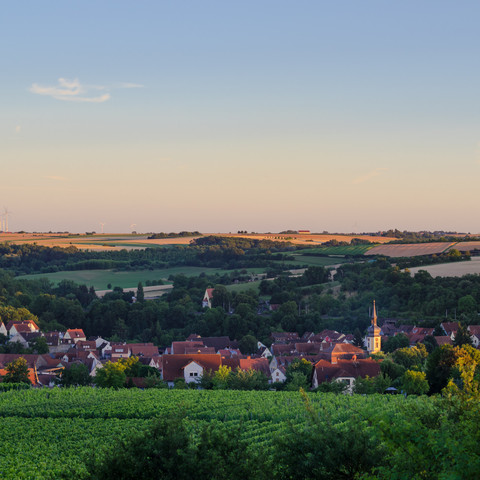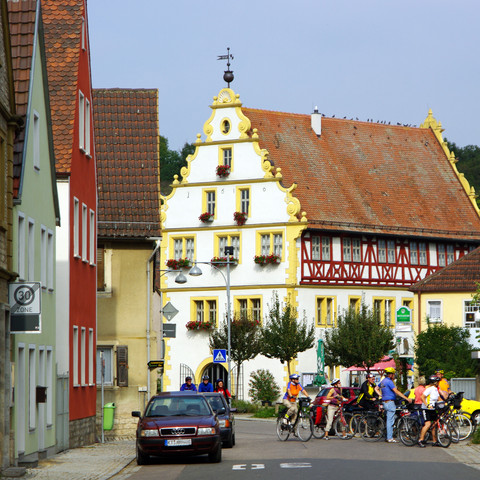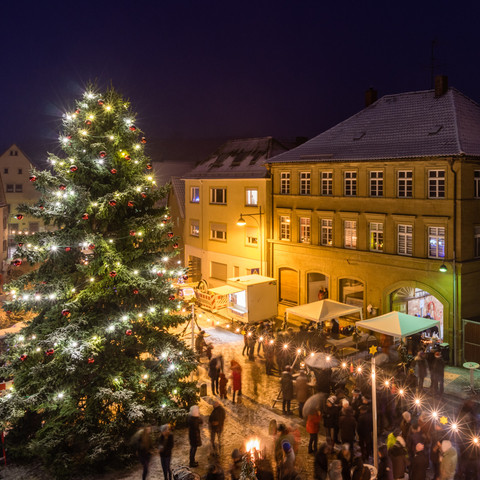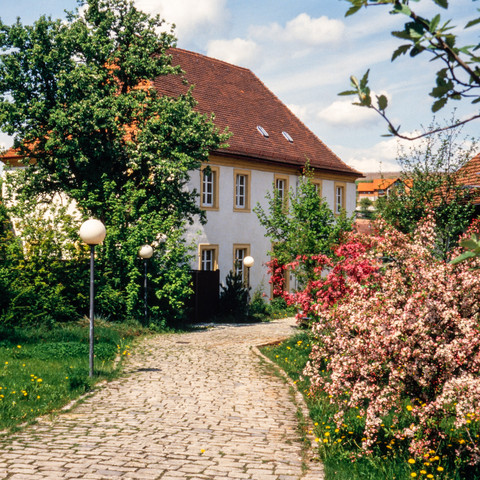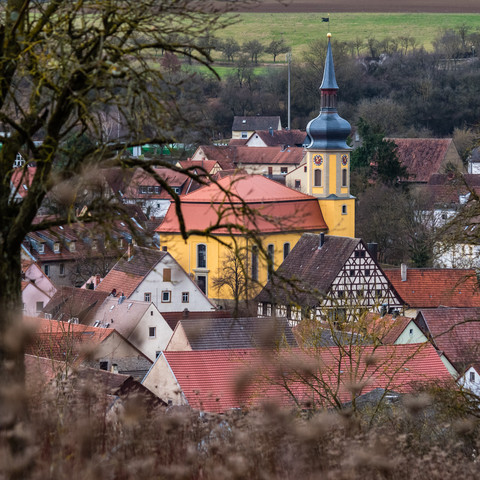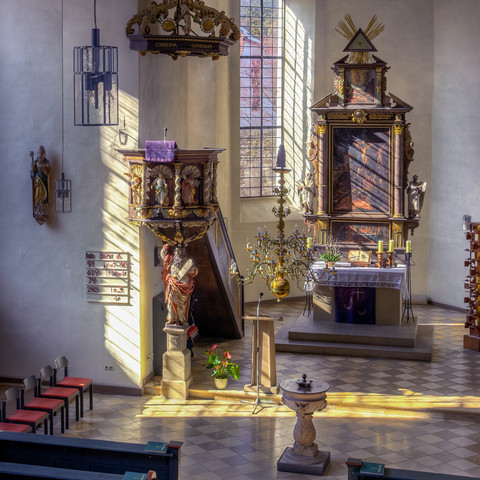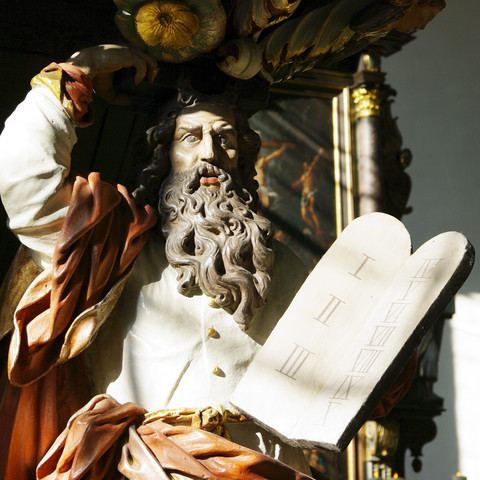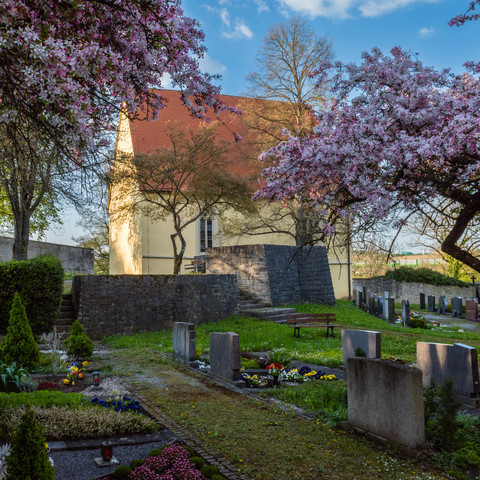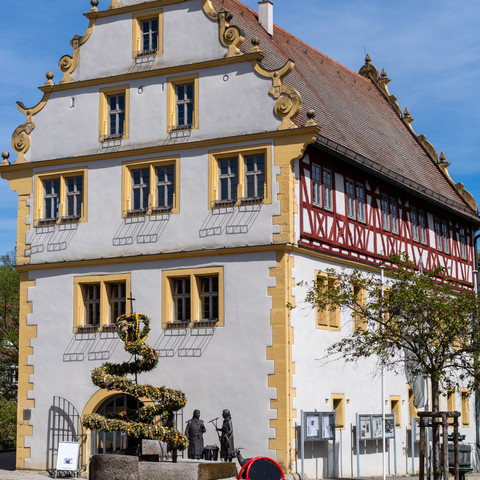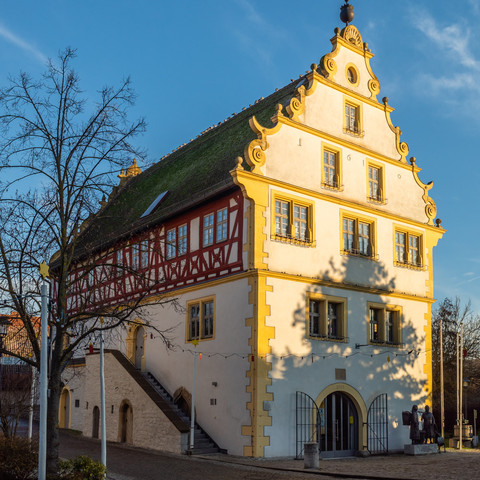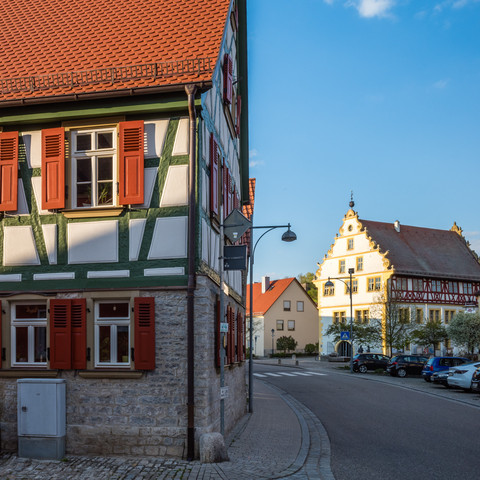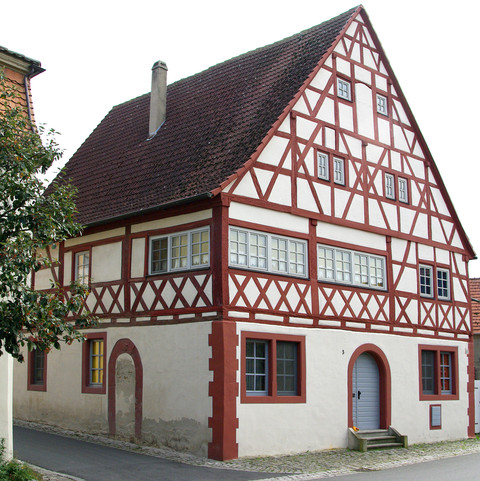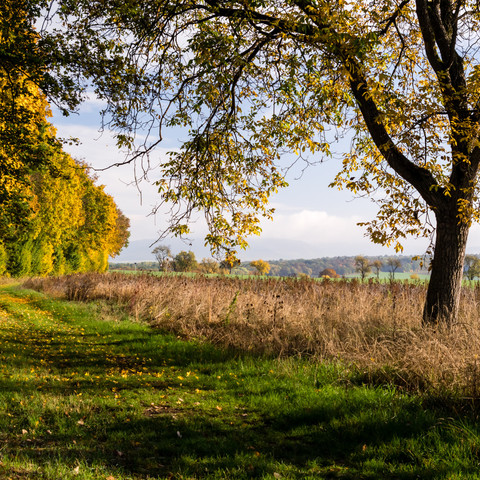The Village Obernbreit
»Obernbreit, a beautiful Franconian village on the Breitbach creek«
(Roman Herzog, former Federal President)
Agriculture and viticulture characterize the pretty village in the Breitbach valley in the "Vorsteigerwald" (Steigerwald forest rim). The long and eventful history of the village, which today has about 1800 inhabitants, begins with the settlements from the Bandkeramiker period (5000 BC) and the Hallstatt period (500 BC).
Obernbreit owes its origin and name to the crossing of the trade route Würzburg-Ochsenfurt-Nürnberg over the Breitbach (broitebrod = Slav. ford). First mentioned in a document in 1258 as a fief of the Counts of Castell, Obernbreit came to the Lords of Hohenlohe only 40 years later. In 1448, the Margrave of Ansbach acquired the six villages on the river Main (Obernbreit, Martinsheim, Gnodstadt, Oberickelsheim, Marktsteft and Sickershausen).
In the 16th century the cathedral chapter of Würzburg, the lords of Seinsheim, of Seckendorf and of Wallenfels-Lichtenstein, the Schwarzenbergs and the margraves of Ansbach shared the village lordship of Obernbreit. The Margrave's chief magistrates of Creglingen and Obernbreit (1607 - 1730) exercised jurisdiction over the six villages on the Main river.
The splendid Renaissance town hall (1610) and the magnificent official residences of the cathedral chapter, the Schwarzenbergs and the margraves of Ansbach still bear witness to the power and wealth of the three "great" village lords. They were the seat of the Schultheiße (mayors), who, appointed by the respective rulers as lords of the court and administrators of their property, jointly presided over the council meetings in Obernbreit. The magnificent Renaissance building of the town hall, erected in 1610 on the site of various previous buildings with the assistance of the stonemason and master builder Hans Kesenbrod from Segnitz, now houses the municipal administration, an information center and the meeting hall. The citizens' hall offers space for social and cultural events. With the reconstruction and renovation of the town hall in 2003, the community created a representative center for itself.
The baroque church of St. Burkard, built in 1731-1733, is dominated by a 38m high tower with a dome and lantern. The village church characterizes the silhouette of the market community Obernbreit and contains works of art worth seeing inside, including a sculpture of St. Boniface (ca. 1500), the high altar (1662), the Moses pulpit (1696) and the baptismal font (1635). The Marienkirche (Church of Mary), a modern building by the Würzburg diocesan architect Hans Schädel with a Stations of the Cross wall painting by Karl Clobes, is a successful example of church construction after World War II that is well worth seeing. Idyllic in the Steinbach valley, in the middle of the cemetery, 300m south of the village lies the St. Cross Chapel, first mentioned in a document in 1301, with epitaphs from the 16th and 17th centuries that are worth seeing.
The Jewish community of Oberbreit built a synagogue with a mikveh (ritual bath) in the middle of the 18th century, which was used until 1911. Starting in 2005, the synagogue and mikvah were transformed into a place of remembrance and commemoration.
Since the 1980s, viticulture has also been practiced again in Obernbreit. There is currently one self-marketing vintner as well as several sideline vintners who supply the Franconian regional vintners' cooperative (GWF).
